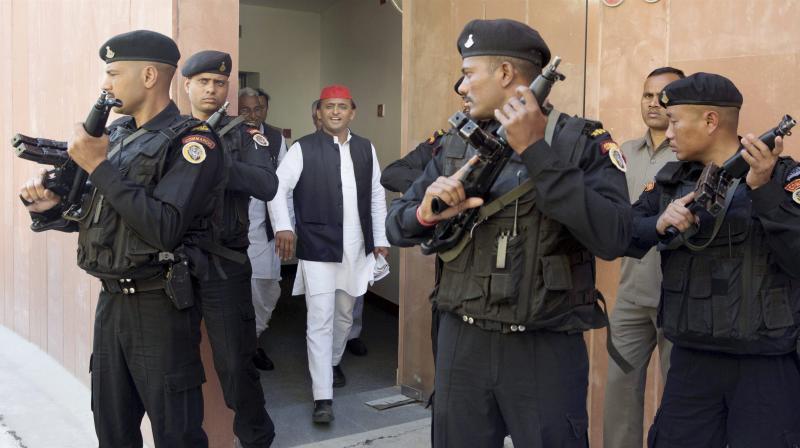Fractured mandates, mid-term polls, defections: Instability not new to UP
Uttar Pradesh was placed under President's rule 10 times, the last time being in 2002.

Lucknow: Will Uttar Pradesh, which has witnessed long phases of instability and fractured mandate, be lucky this time as in the past two Assembly elections to have a clear cut winner?
The biggest state in the country with over 22 crore population has seen it all--from long spells of President's rule, fractured mandate, mass defections, mid-term elections and withdrawal of support in not so distant past.
Till Mayawati romped home riding on her social engineering formula in 2007 with her BSP getting a clear mandate, the state has experienced frequent bouts of political instability.
The state was placed under President's rule 10 times, the last time being in 2002.
Uttar Pradesh is also witness to strange bedfellows in the BJP and the BSP coming together in even stranger coalition of rotating chief ministership for six-month period, which proved to be a flop in the late 90s.
Of the 16 assemblies elected since 1952, a single party got majority and completed full five-year term only seven times. On nine occasions, the state got governments, which lasted for a period as less as four months.
The instability has also led to mid-term elections for seeking fresh mandate as many as seven times, the last being in 1998.
Considered a favourite hunting ground for the Congress in the initial years after Independence with stalwarts from the state leading national and state politics for long years, UP became the first state in the country to get a non-Congress government.
Way back in 1967, Charan Singh and his socialist colleagues had left the Congress to form the Bharatiya Kranti Dal and formed the government.
Despite the Emergency, Congress rule was fragmented in the 1970s repeatedly by chief ministers who were either removed or had revolted before quitting.
The Congress leaders of Hemwati Nandan Bahuguna's ilk left the party during the Emergency, paving way for President's rule.
Another Congress doyen Kamlapati Tripathi had to quit on the issue of Provincial Armed Constabulary (PAC) revolt in the 70s.
Congress took over the reins in 1980 after the Janata Party's brief spell in power from 1977 to 1980, with leaders of the stature of V P Singh and N D Tiwari at the helm.
But political instability continued to dog the state and the Janata Dal won in 1989.
It was the advent of casteist and communal politics in the wake of the Mandal Commission and Ayodhya movement which saw political turmoil at its peak and violence in the seat of power in the Vidhan Sabha.
It was a period of splits, mass defections, hung house, President's rule, mid-term elections and ruling parties flipping chief ministers to quell dissent.
This period saw almost all major parties somehow managing to taste fruits of power, even if for brief spells, while Congress's popularity started waning.
The new non-Congress leadership of Mulayam Singh Yadav, Kalyan Singh, Mayawati and Rajnath Singh among others emerged in the state and they gradually carved out a niche at the national level.
Mayawati's victory in 2007 came not just as a surprise for all those who had got used to political instability in the state but also political pundits who had predicted fractured mandate.
Again in 2012, the emergence of young leadership of Samajwadi Party's Akhilesh Yadav was equally surprising but indicated the desire of the electorate for a stable
government. The 2017 results will prove if UP scores a hat-trick.

